How To Clean Off Dead Skin On Face
The Science of Facial Scars Healing: Different Types, Their Causes, and How to Treat Them
Remember that time you had to get stitches?
Or finally won that battle with a blemish?
Or kept knicking yourself in the same spot while shaving your legs? (Ankles are difficult.)
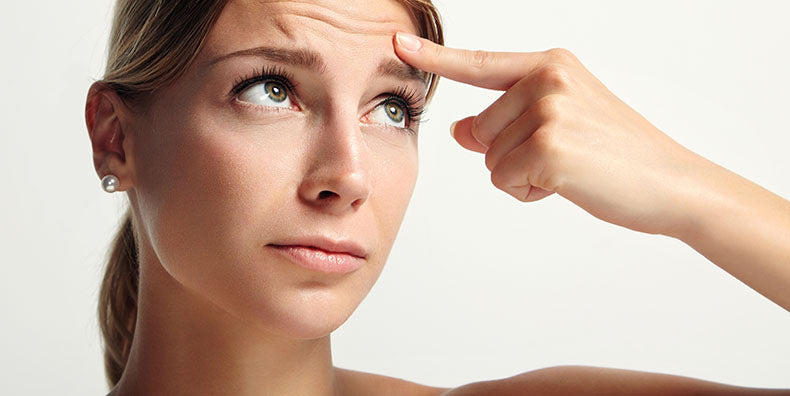
Of course you do!
Because now you have a scar to remind you!
It could be a dark scar, dark scars plural, or scars on face from an annoying blemish, shiny scar or indented scar all of these are a normal part of the skin's natural healing process, but for many of us, those little telltale marks can hang around for a while as an unwelcome cicatrix. (Another word for a scar. Say it out loud. Isn't it fun?)
In a study conducted by professors of reconstructive and plastic surgery, it was estimated that many people are seeking to fix scars.
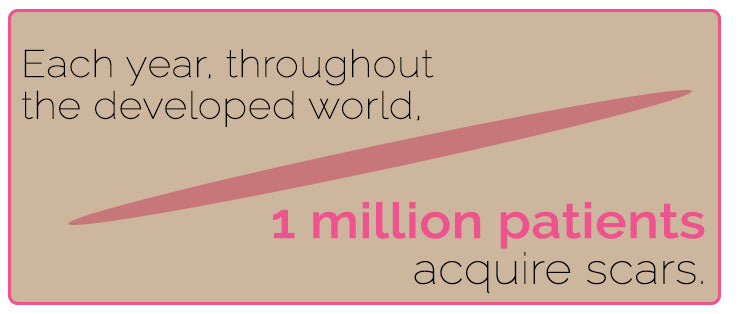 And that's just per year, and it doesn't even account for the entire global population!
And that's just per year, and it doesn't even account for the entire global population!
Which means, whether it's from an injury, surgery, burn, or a pimple gone awry, we pretty much all have scars of some kind.
As a skincare professional, I'm often asked if it's possible to fade or diminish scars.
Today, I'm going to give you info on the science of scars: different types of scars, what causes them, and if there's a way to fade those pesky little reminders!
Can Facial Scars Heal?
Can Scars on My Face Heal? We will be honest, most likely no skincare product or facial treatment will return your skin to the way it looked before a procedure or injury. Here are the two things you must do to help heal scars as best as possible – Keep them out of the sun or underneath natural sunscreen at all times, and moisturize them day and night.
What Causes Facial Scars?
Scars occur when the dermis, the second deepest layer of skin, is damaged by injury, surgery, picking at a scab, etc.
When a wound occurs, your skin goes into immediate healing mode and starts trying to close it up as quickly as possible.
First, a blood clot forms on the skin's surface (the epidermis) and covers the cut to form a scab.
Then, the dermis gets to work below sending out fibroblasts (the cells that make collagen) to start rebuilding tissue.
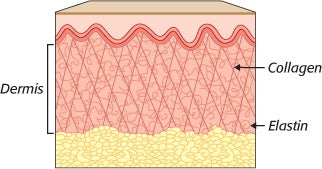
Because your skin is in a hurry to repair itself and replenish tissue, the collagen may not get laid out in the neatly-organized lattice pattern that makes up the rest of your skin.
This hasty approach can result in a scar.
Too much collagen creates a raised scar, while a lack of collagen makes an indented one.
Over the next couple years following an injury, your skin will work to replace that messy collagen with neater tissue, so a scar may be reduced, but may never completely fade or return to your skin's original appearance in that spot.
How severe or obvious a scar ends up looking can be determined by a number of factors.
- Age: Older skin tends to contain less collagen and elasticity, making healing slower and scars more probable.
- Skin tone: Those with darker or fairer skin are more susceptible to noticeable scarring.
- Location of injury: If you get a cut on a place that takes longer to heal, say on a knee that bends a lot, or a foot that experiences constant friction from shoes, scarring may be more likely.
- Hormones:Hormone levels can affect your body's likelihood of incurring scars or hyperpigmentation.
Types of Facial Scars
Keloid or Hypertrophic
Keloids are those raised scars that look like puffy, dense tissue and might also be pink or darker than the surrounding skin.

Similarly, a hypertrophic scar may also be raised, but it doesn't expand beyond the spot of the injury.
These types of scars occur when there's an overproduction of tissue at the site of the wound and collagen collects and is overbuilt under the top layer of skin.
What Causes Keloid Scars
When the dermis layer of your skin kicks into aggressive healing mode, it sends in fibroblasts to start distributing collagen to rebuild tissue.
However, instead of having time to lay everything out in an orderly, basket-weave style – which is how the rest of your skin is composed – they start throwing down overproduction of collagen sort of haphazardly to quickly get things closed up.
So, you end up with a bunch of unorganized, built-up collagen beneath the top layer of your skin which results in a raised scar.
Atrophic Scar
If you had chickenpox as a kid, you may have a parting gift in the form of a little pitted or divot scar.
This is where they get their familiar name, "pockmarks."
This is an atrophic scar, which is sunken in and results in a recessed mark on your skin.

These scars are typical of both chickenpox and cystic acne.
What Causes Atrophic Scars
These sunken scars are caused when there's damage to the skin's underlying structure – fat or collagen cells – usually as a result of inflammation.
The outcome is that there's not enough tissue to fill out the skin, so it causes a depression in the skin's surface.
Acne Scars
As if battling blemishes wasn't already a pain, they can leave you with lasting scars.
And, I'm not just talking about skin damage from picking and popping pimples.
Although, that's not good for skin either.
Hands off, resist the pick!
I'm talking about cystic acne.
These painful bumps are rooted deep in the skin, and when pus and bacteria collect and sit below your skin's surface, they can do damage to deep layers and result in scars which can take on a variety of forms.

Icepick Scars
These are those deep, indented scars that may resemble a large pore. They occur when inflammation causes collagen below skin's surface to collapse, leaving a depression.

Rolling Scars
Rolling scars are depressions with rounded edges, and there are typically a few of them in one close area making them look like a continuous, undulating scar.
These scars are caused when the subcutaneous tissue layer (the layer below the dermis) creates fibrous tissue that tugs the top layers down.

Boxcar Scars
These scars are broad depressions with more defined edges.
Boxcar scars occur when a cyst destroys fat cells under the skin resulting in an indentation.

Hyperpigmentation
These scars cause a dark spot on the skin's surface that may resemble a freckle.
Hyperpigmentation happens when melanocytes (the cells that produce melanin, or pigment) go into overdrive in the production of melanin at the site of an injury or inflammation caused by acne.
If you're dealing with cystic acne, you don't have to go through it alone.
I always recommend talking to a dermatologist!
There are so many treatment options out there, and they can help you determine which one will work best to care for your skin!
Contracture Scars
These scars are the result of a large area of skin being lost (or the kind you'd get from a severe burn).
The skin contracts as it heals and scars, forming tight, shiny skin that may inhibit movement in the area.
Stretch Marks
Ladies, if you've had the pleasure of being pregnant, you may be familiar with these lovely lines (although not all moms-to-be experience them, 90% of pregnant women do!).

Anyone can get stretch marks.
They can occur all over the body and happen when there's extreme weight gain or growth that makes skin stretch, like during puberty.
Stretch marks can appear as indented or raised lines that are either darker (purple) or lighter (white) than the skin tone that surrounds them.
What Causes Stretch Marks
While the exact cause isn't known, it's theorized that skin stretching causes damage to the elasticity of the tissues in the dermis layer which leads to scarring.
It's also been suggested that high levels of cortisol could play a part in making your skin more vulnerable to stretch marks.
Preventing Stretch Marks
In the battle against stretch marks, moisture is your best friend.
Imagine a dry, brittle piece of elastic or rubber band.
When it's stretched, it's more prone to tears and breakage.
Shutterstock
Same goes for skin.
Grab some coconut oil, shea butter, or your rich moisturizer of choice and slather on that goodness.
Your future skin will thank you!
How to Prevent Face Scars
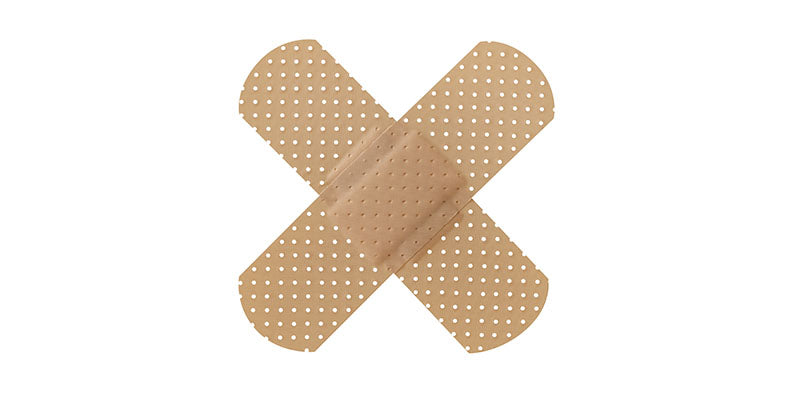
If you do find yourself with an injury or damage to your skin, there are a couple things you can do to help heal and avoid making matters worse!
- DON'T PICK: I know, the temptation is almost too much to bear, but if you can avoid picking and just let a scab or a blemish resolve and heal on its own, you'll reduce the chance of developing a scar. Stay strong, my friends!
- Keep wounds protected: When your skin is healing, moisture and coverage are the keys to helping it along. Keep a wound properly cleaned and covered, and avoid letting it dry out by regularly applying a medicated ointment.
- Continue protection: After your skin has healed, keeping the area protected with SPF whenever you're out will help prevent the scarred area from getting darker.
Is It Possible to Minimize Face Scars?
While there's no one-size-fits-all method, there are a variety of options for treating scars.
Raised scars may eventually resolve and fade on their own.
However, they can also be minimized using dermabrasion, steroid injections, cortisone injections, silicone gels or pads, or even through surgery to remove the raised tissue and replace it with a cleaner, more minimal scar.
Indented scars can be resolved through in-office treatments including lasers, filler injections, dermabrasion, or chemical peels.
Either way, if you're concerned about physical scarring, you should talk to your doctor or dermatologist about which treatment option is right for you!
What About Fading Facial Scars?
Scarring that is caused by hyperpigmentation resulting in dark spots can be lightened up by using certain ingredients in your skincare routine.

Shutterstock
It's worth mentioning that, when working to lighten and brighten your complexion, patience and regular application is key! You won't see results overnight.
In order for most lightening formulas to work effectively, they require time and consistent use.
Practice your routine religiously, and stick with it!
Look for these brightening ingredients!
- Antioxidants: These help combat free radical damage which causes collagen and elastin breakdown, hyperpigmentation, and thickens your skin's texture. Antioxidants help rebuild collagen and encourage healing for healthy skin!
- Vitamin C:This vitamin works to inhibit the skin's overproduction of melatonin in response to damage or an injury. Plus, since it's a member of the antioxidant family, it helps rebuild collagen.
- Retinol: A vitamin A derivative, retinol works by gently exfoliating the top layers of skin to lift away dark skin cells. In turn, it promotes cellular turnover and encourages the production of new, healthy skin cells and new collagen which can help soften scars, retinol for scars is a great choice! This retinol facial oil on Amazon works wonders. It doesn't cause dryness, redness, or flakiness like most retinol products do.
- Alpha Hydroxy Acids (AHAs): This family of acids helps with cellular turnover to renew skin and encourage healing.
- SPF:Wearing daily sun protection will guard against scars getting any darker or skin incurring any further damage. Plus, it will protect against collagen and elastin breakdown to keep skin looking youthful.
Will pimple scars go away by themselves?
A quick Google search of facial scar pictures after a bigger-than-acceptable zit appears, and we know that you're probably level-10 anxious. While facial scarring is a serious matter, it should be noted that something like a small blemish on your face is okay. It may leave a spot on your skin temporarily, but no, it shouldn't lead to permanent face scars.
That said, it's smart to be precautious during the time that the pimple mark exists. To prevent scars on skin in any capacity, make sure that you're using a sunscreen so that the UV rays don't cause further damage.
In the event this one pimple turned into a full-blown break-out that left multiple marks, know you're not alone. Worldwide 40% of patients have acne scarring. The good news? Acne scars fade. You can get rid of a scar , whether it be face scars or acne scars on the chest, with a little TLC.
Wondering h ow to fade those acne scars ? Retinol acne scar treatments are the first way to go. Retinol is a Vitamin A derivative that not only helps to fade fine lines in aging skin, but to get rid of pesky spots thanks to its ability to cause cells to regenerate quickly. So when trying to find skin care for scars to get those scars healing, be on the look-out for this miracle worker in a cream or serum! It'll help the acne scar or scars fade and let those scars start healing fast.
How To Lighten Scars?
Searching for How to lighten scars? If the scar is fully healed, try a skin lightening serum. See below for recommended products.
What facial removes acne scars?
Aside from just a pampering ritual, facials are great to help with face scars removal. They're just one of the many skincare options for scars. There are several facial types that can help fade your scar tissue, and they are as follows:
Microdermabrasion: A great option for all skin types, microdermabrasion suitable for fading scars . The process is simple: a trained professional gently exfoliates the surface of the skin using abrasing and suctioning. It's a superficial form of skincare for scarring ; meaning it isn't invasive and won't require any recovery time post-treatment.
Laser Treatment: Not exactly skin care for scar tissue, this one is focused on using powerful light beams to reduce spots. It does this by gently resurfacing the skin. It's been shown to help in fading scars, though it should be noted, it's not the most effective means of scar removal for black skin or a black scar, or even if you have dark skin after wound healed.
How to lighten facial scars?
If you'd like to kick-start healing scars , one way to do that is by lightening the areas with the following popular treatments.
Salicylic Acid : One of the most classic acne scar fading treatments, Salicylic Acid is a part of the Alpha Hydroxy family. It's known to exfoliate the skin, removing any dead layers. This works in benefit of scars since it can unveil new skin after each treatment. It's ideal for deep scar removal.
Lactic Acid: A great option for all types of skin, Lactic Acid is another known player in healing scars. When used as a peel once to twice a week, you'll notice an improvement in texture and appearance.
How to remove facial scars naturally?
When it comes to face scars removal, it is possible to use natural, home remedies. It should be noted however, it's not the easy way to get rid of scars , compared to professional treatments, but can lead to scars healing over time if you keep up with it.
A few of the ways to naturally remove scars are as follows.
Use manuka honey. Yes, it's a pretty sweet option, we know. Manuka Honey has been used throughout history for its powerful antioxidant count and healing properties. Applying as a mask to the face can help that tricky scar fade i n time.
Use Baking Soda. A cheap, relatively easy-to-find option is baking soda. It's known to help brighten skin and act as an exfoliating agent. Spot treat your face scar (or scars) with a 1:1 ratio of baking soda and water for best results.
How to heal scars on face?
If you have a scar on face skin or in the facial area, if course you want it to heal.
How to cover facial scars with makeup?
If you're worried about scars on your face , and feel like despite your best efforts fading acne scars is proving to take more time than you expected, then there are tricks to use makeup to cover scarring skin.
The first is to use a cleanser, preferably one that's part of your scar skin care regimen.. Then, you'll want to apply a primer and start off with a concealer to cover any spots with scars. This will help " fade" an acne scar easily . Next, use a high quality foundation. Our tip? Find one that is known to help with scars on the skin .
Finally, watch those facial scars fade.
My Favorites for Fading and Treating Scars

iS Clinical White Lightening Serum
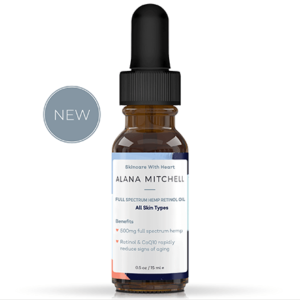
Alana Mitchell Night R1 Retinol Facial Oil
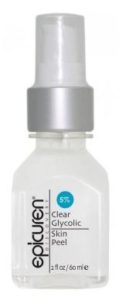
Epicuren Glycolic Polymer Solution – 5%

Dermaquest Stem Cell Rebuilding Complex
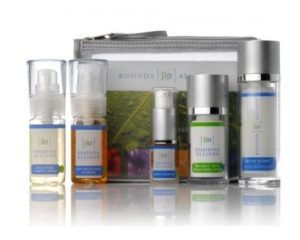
Rhonda Allison Skin Brightening System
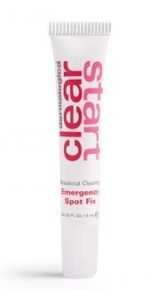
Dermalogica Emergency Spot Fix
Final Thoughts
Scars can be unpleasant to live with, but they're also reminders of experiences and a life lived!
Whether you choose to keep your scars or take steps to treat them, it's a decision you should make based on what's best for you and your skin.
Make sure you're caring for your skin, scars and all!
Do you have questions about the best way to fade or treat your scars? Ask us in the comments section. I'm here to help!

How To Clean Off Dead Skin On Face
Source: https://www.skincarebyalana.com/blog/facial-scars-healing/
Posted by: wakefieldthedis1939.blogspot.com

0 Response to "How To Clean Off Dead Skin On Face"
Post a Comment